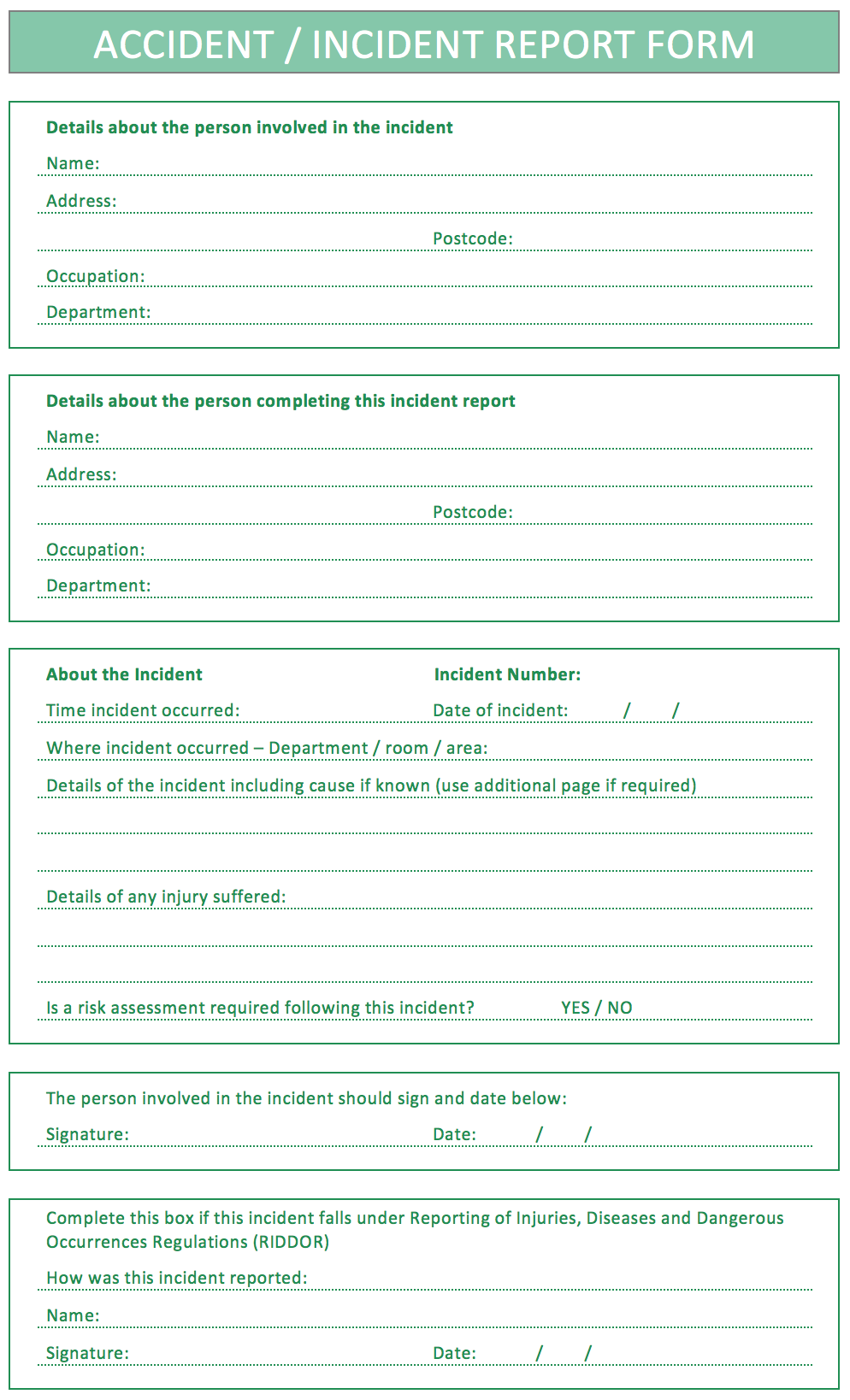What is RIDDOR? The following is a summary of The United Kingdom Statute Reporting of Injuries, Diseases and Dangerous Occurrences Regulations or RIDDOR. It is not a definitive guide and should not be used as such. For full information see article references at the bottom of this page.
The Reporting of Injuries, Diseases and Dangerous Occurrences Regulations or RIDDOR is a law in the United Kingdom revised in 2013 that requires employers, and other people in charge of work premises, to report and keep records of work-related accidents, diseases and dangerous occurrences of certain types.
There is not a requirement to keep a record of all work related accidents, diseases or dangerous occurrences (referred to as ‘incidents’ in this article). RIDDOR requires a ‘responsible’ person in the work environment to report accidents. Responsible persons include an employer, the self employed or people in control of a work premise. There are a number of special cases that are dealt with separately which include gas suppliers and engineers, people working offshore and people in mines, quarries, pipelines and wells. For more information on these special cases see articles reference below.
The certain types of reportable incidents are as follows:
Injuries
- Fatalities – the death of any person with the exception of suicide, including an act of physical violence
- Specified Injury – sometimes labeled as ‘Serious Injury’ when recording. These include most fractures, amputations, sight loss or reduction, crush injuries to organs, serious burns, loss of consciousness, injury arising from working in an enclosed space.
- Over seven-day incapacitation of a worker – where a worker cannot work for more than seven consecutive days not including the day of injury but including weekends or rest days
- Over three-day incapacitation of a worker – accidents that result in a worker being incapacitated for more than three consecutive days must be recorded, but need not be reported.
- Non fatal accidents to non-workers – Accidents to members of the public who are taken directly from the scene of the accident to hospital. there is no need to report incidents where people are taken to hospital as a precaution when no injury is present.
Occupational Diseases
Occupational diseases include (but are not limited to) the following:
- carpal tunnel syndrome
- severe cramp of the hand or forearm
- occupational dermatitis
- tendonitis or tenosynovitis of the hand or forearm
- hand-arm vibration syndrome
- occupational asthma
- any occupational cancer
- any disease attributed to an occupational exposure to a biological agent
For more detailed information on occupational diseases refer to HSE Occupational Diseases
Dangerous Occurrences
In the 2013 revised statute 27 categories of dangerous occurrences have been defined. A dangerous occurrence is a certain, specified near-miss. They include:
- The accidental release of any substance which could cause injury to any person
- The collapse, overturning or failure of load-bearing parts of lifts and lifting equipment
- Plant or equipment coming into contact with overhead power lines
More information of dangerous occurrences can be found in Schedule 2 of RIDDOR 2013
Gas Incidents
Distributors, fillers, importers & suppliers of flammable gas must report incidents where someone has died, lost consciousness, or been taken to hospital for treatment to an injury arising in connection with that gas. Such incidents should be reported.
In addition, registered gas engineers must provide details of gas appliances they believe are dangerous enough to cause an accident or incident.
What records need to be kept?
All records of reportable injury, over-three day injury, disease or dangerous occurrence must be kept and reported using one of the standard online RIDDOR forms. The list of online forms is available through HSE How to make a RIDDOR report.
It is also good practice to keep your own record of incidents. This usually undertaken by recording incidents in an incident book. However, an incident book is not a particularly helpful medium when it comes to incident analysis. In addition to capturing the details of the incident in an incident book (this could be an online document) it is useful to capture the number of incidents in a system to build a picture of an organisations health and safety record over time. This becomes particularly important if the industry requires the demonstration of good health and safety practice.
An example of a typical accident / incident report form can be seen to the left and downloaded here: Accident/Incident Report Form
A system like Scoreboard can provide everything required to not only record and manage specific incidents, but also to record incidents over time and to allow future analysis of the data. To make life easier for anyone looking to implement this type of system, Scoreboard has a RIDDOR template option: The RIDDOR Scorecard
Resources:
- The 2013 Statutory Instrument (pdf) – The Reporting of Injuries, Diseases and Dangerous Occurrences Regulations 2013
- The Online Version – The Reporting of Injuries, Diseases and Dangerous Occurrences Regulations 2013
- The Health and Safety Executive – HSE guidance and information on RIDDOR
- Wikipedia on RIDDOR – Useful background information and summaries
- Accident/Incident Report Form – Example of a typical accident/incident reporting form
End What is RIDDOR?


